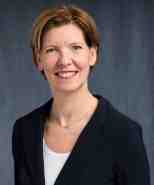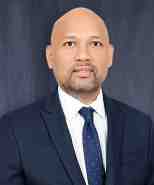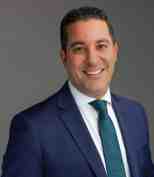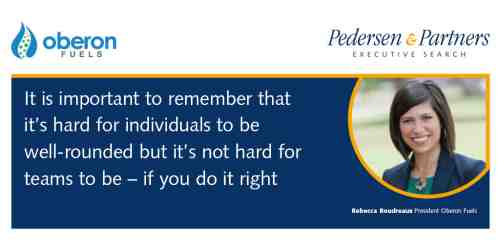The digital transformation journey requires the repositioning of IT in the organisation. For an organisation’s digital transformation to succeed, IT must evolve from a cost centre to an integral part of the value chain towards the customer. Many asset-heavy companies transform into “technology” companies where data comes to supplant many of the assets previously listed on the balance sheet, driving customer experience and allowing the creation of new business models. As a result, many formerly outsourced or “bought-in” IT functions and solutions are brought in-house.
In this series, we talk to IT leaders across a range of industries about how the choice between “making it” versus “buying it” has affected the makeup of their IT organisations, the interactions with business stakeholders and vendors, and the impact on talent acquisition and retention. This conversation was led by Peter D’Autry and Paramita Lahiri of the Technology Practice Group at Pedersen & Partners.
Satya Samal is SVP and Chief Business Officer Europe and Africa with Larsen & Toubro Infotech (LTI), a global IT services and consulting corporation headquartered in Mumbai, India.
Satya and his team at LTI have partnered with some of the leading companies in Europe and Africa in their digital transformation journeys. Prior to LTI, Satya held leadership roles at NIIT Technologies and Infosys, where he built businesses in new geographies, incubated new offerings and expanded into new industry verticals. Earlier on in his career, he worked with McKinsey & Co in their London office. He started out with SAP, where he was a Development Manager for SAP’s High-Tech industry solution.
How does your organisation, as a partner on the digital transformation journey, adapt to the shifting demands of companies while they consider in-sourcing technology, demand more agility and try to reduce CAPEX, risk and the time horizons of projects?
Let me start by articulating how we at LTI see digital transformation, and how it has changed the way we design technology solutions, and then respond to some of the other points you mention in the question.
When we started the call, you mentioned digital transformation focusing on the monetisation of data. That is indeed one of the major benefits, but in our view not the only benefit. As a digital transformation partner, we try and bring a broader perspective to our clients.
We see the benefits of digital transformation in five areas.
The first area is about re-imagining existing processes and enabling them with new digital technologies to become more efficient, agile, and responsive by orders of magnitude. A lot of things need to come together to deliver this: automation, AI and ML, thinking about processes from first principles, Lean, looking at processes from the user’s perspective, and ensuring they have a consumer grade experience. We call this Operate to Transform – how can we use technology to transform a client’s operations for a step up in operational efficiency and agility?
The second area is where we look at all data available to a company – structured and unstructured, internal and external, sparse and widely available, streaming and rare events – and then use recent advances in data and analytics including AI and ML algorithms to discover opportunities.
Many types of opportunities emerge – more personalised customer interactions, the automation of complex decision-making activities, monetisation possibilities with data, more efficient business operations using techniques such as predictive maintenance, intelligent supply chain planning, smarter pricing etc. We call this transformation towards a Data Driven Organisation.
Thirdly, we look at how digital transformation can change the way customers, suppliers and employees engage with our client companies. To do this well, we need to go beyond technology.
We must look at the transformation from the user’s experience and ask ourselves what a great experience looks like to them, and then deliver it through all the available tech.
One example of this is how we used design thinking, prototyping, user-centric design etc. to re-imagine how millennials engage with a European bank’s operations in Africa. Our solution brought down the account opening time from five days to half an hour – and equally importantly, it was a pleasant experience for potential customers, very different from tedious, error-prone form-filling. We call this Experience Transformation.
Moreover, digital transformation enables new business models. For example, take an asset-intensive business such as manufacturing, construction or engineering. These companies often have idle machines in their inventories, which can be rented out to other companies that need them but do not own them. This is a great opportunity for a new revenue stream. We can set up a marketplace for renting out idle machinery, and now your idle machines are earning money for you. A new business made possible by digital!
Fourthly, one of the biggest challenges to digital transformation is the IT landscape that clients already have. Many companies have built up their core IT for years. Over time, it becomes clunky and expensive, slowing business change. But we must be careful; it is not prudent to throw away all these investments. Rather, we must make the changes judiciously – bring in the new tech, but also make changes to the current tech so that it enables and does not hinder digital transformation.
A lot of things need to be done towards this end: carve out pieces of applications and make APIs out of them so that they can talk seamlessly to each other and the outside world, get these applications to run on cloud infrastructure, de-couple the business logic from the user interface so that the same business logic can work nicely with all types of user interfaces like mobile, web, social media and so on, de-couple the data from the application in a way that other applications can easily access these data. We call this Digitalising the Core.
The final benefit is that we can change the operating model in line with the digital transformation. We could write the most sophisticated AI/ML-based predictive maintenance algorithm, send messages to engineers on their Apple Watches that a machine needs maintenance, but if we are still provisioning spare parts based on a traditional preventive maintenance run, all of these digital investments will have come to naught. For a digital transformation to succeed, we need to do what we call Digitalising the Operating Model.
Now, going back to some of the points you mentioned in your question: there are many changes in the way we are building digital solutions. One area that
I would like to highlight is the shift from a purely process-centric solution design to a user-centric and experience-centric solution design.
Traditional software designs were rooted in the end-to-end process way of thinking, going back all the way to large ERP rollouts. We start with a sales order, then we do an available-to-promise, then we price, we deliver, we ship, we invoice, and we collect the money. We call this traditional process the “order to cash” process – there’s nothing wrong with it, and it is essential to have a strong process foundation.
But today, an additional element must be added. We need to consider how employees, suppliers and customers engage with these applications, and we need to make these interactions and engagements friction-free, memorable, and consumer-grade. Users today expect an Apple or Netflix level experience.
As a partner, we need to provide additional thought horizons, which is where we use elements such as design thinking, persona-centric solution design, and rapid prototyping.
What does this mean in terms of insourcing and outsourcing, or making vs. buying it?
The core of client engagement remains the same. The sine-qua-non of every engagement is that I must fundamentally solve a business problem.
Today, when we solve these business problems, we see a mix of approaches. We see the lines between insourcing vs. outsourcing or make vs. buy getting increasingly blurred.
As I mentioned earlier, clients are launching new business models, making radical process improvements and designing awesome experiences. Often, there are no software products on the market that they can buy which will meet these needs out-of-the-box. There must be some in-house production, but it is unlikely to be 100% made in-house – it is almost always a mix. Let me give some examples.
We often buy off-the-shelf products, but then carefully develop custom code on top of these platforms to meet the unique needs of digital transformation. By the same token, when we make bespoke applications, we use lot of open-source code components such as licensed rule engines and UI frameworks. We develop these applications on low-code development platforms (LCDPs) that we buy. These platforms have reusable components that help us to reduce the amount of coding and the need for specialised developers. Business users can use LCDPs, and with some training, they can design solutions faster than they would be able to with a traditional software development model.
We also buy many third-party API services, as well as services available from cloud providers such as MS Azure and AWS (which are growing rapidly) instead of making that software ourselves. Our own platform-based offerings, such as Mosaic, Leni and our recently-launched LTI Canvas, provide a foundation for rapid customisation based on the specific requirements of clients. So it is almost always a mix of make and buy.
Now, let me respond to the insourcing vs. outsourcing point you mention. Companies outsource for many reasons – to focus management bandwidth on core areas, to bring in expertise that is not available in-house, to ramp up project teams that are not needed once the project is delivered, to do things more cost-efficiently and so on.
These economic drivers are still valid for digital transformation.
But there is an additional dimension at play.
As I was saying, building good digital solutions requires a broader and deeper view of what is available in the market, what we should buy, how we should configure what we have bought, what we should make, what platform we should use to develop this software and how we can stitch all this together to build the best solution.
Taking the right decisions here is not easy. We need to invest an exponentially-increasing amount of effort to keep track of developments in new products, technologies, and tools. For one client, we recently found that some of the most innovative banking solutions are being developed by an Indian company for a Kenyan business.
In summary, to stay ahead, companies must be deeply entrenched in the network of technology advances being made in different parts of the world. Doing that alone can be inordinately expensive.
Partnership can help here: partners are the critical nodes through which companies can access a network of expertise and innovation without blowing their budgets. Partners like us have accumulated a broad-based knowledge repository from serving many clients, we have formal alliance organisations that work with product companies and know what they are building, and we also work with startup ecosystems to know what is happening in that space. We bring a whole portfolio of services, contacts, and information to clients.
The broader expertise and skill set challenges are still there, and have in fact become more acute. While a few large companies can build digital expertise in-house, many companies struggle. Attracting best-in-class digital talent requires significant upfront investment, attention from management, and employee branding. Moreover, it increases the fixed cost of operations and reduces business agility.
In many cases, the pace of digital transformation is far ahead of the pace at which companies can ramp up their expertise, if they try to do it using only their internal resources.
It is important that the partner must put itself in the shoes of the client, understand the business and the opportunities offered by digital transformation. They need to go beyond technology, and address the client’s business challenges.
How should service providers work with start-ups, who are building some very innovative digital transformation solutions?
Start-ups add another element to the dynamic I just described. Some startups are highly innovative with what they bring to market, but many face the same obstacles.
Companies may talk to many start-ups but be unable to decide which one to stick with. What if the start-up fails? Is the start-up strong enough to survive a cycle of iteration and pivoting? Will the start-up succeed in future funding rounds?
Many start-ups are focused on their core solution, and have not yet worked out the broader enterprise environment into which it must integrate. Very few things only operate at the API level.
The solution offered by the startup may not be at an enterprise scale that can run on multiple cloud platforms. It may not support multiple databases, or make it easy for data to flow in and out of all the applications that our clients are using.
This is where partners can be of help.
We run startup networks in different countries to curate startup offerings for the business challenges that our clients face.
We can de-risk startup engagement for the client, by having an arrangement to take over the codebase if the startup folds. We can build tools and software to smoothly integrate the application into the enterprise environment, or to enable clients to migrate data from their old applications to the new innovative applications.
What kind of timeline do you see in digital transformation implementations?
When I started my career, and I’m probably aging myself here, one could do a five-year or seven-year ERP transformation program, with quite a bit of upfront CAPEX. Nobody wants to do that anymore. Clients look for benefits to be delivered within a year, and in many cases within six months or even earlier.
Nevertheless, it is not easy to find the tools and technology to deliver byte-sized, stand-alone implementations. This is where much of our thinking goes today: how to design transformation programs that can deliver value in a progressive fashion. This problem often requires an empirical approach, so it helps to have experience with other clients in similar situations.
Consulting and advisory companies now bring the capability to deliver projects end-to-end. Many build proof-of-concept projects to demonstrate the expected returns to clients. They even propose outcome-based solutions, where they carry the design, implementation and delivery costs, and then take a profit share. How do you see the adoption of such approaches when you engage with the client?
Let me unpack that question. The supplier selection process has indeed changed dramatically. In the past, we used to receive the RFP, design a solution, enter a discussion, fine-tune the solution and agree on commercials. I will call that the “tell and sell” strategy – tell the client your value proposition, and sell the solution.
That has now changed to “show and sell”. Now we must show that we can build something – and that what we have built can deliver value. Otherwise there is no “sale”. This proof-of-concept-based process is becoming common, especially if it is not clear how a solution solves a specific business problem.
We see a lot of this in AI and ML space. LTI has built its Mosaic Data Engineering & Analytics platform. One of the propositions we offer to clients is that they test the value of the algorithm first, and then buy. We develop the algorithms, test it with the client’s data, pull out the insights, and then clients can use these findings to build a business case and scale their investment in the platform.
You are correct in that
outcome-based pricing is becoming more popular. Clients justifiably want to link the fees they pay to a partner to the value of the solution, and commercial models are rapidly evolving in response to this.
For example, a wealth manager can link the partner’s fees to an increase in the size of the discretionary business, if that was the goal of digital transformation. Rapid adoption of cloud and SaaS technology is also helping – clients can ramp up their hardware and software spend as the business scales up, and not have a big outlay upfront.
With regards to the entry of management consulting firms into the digital transformation space, this is a large market growing at a fast pace, and there are opportunities for different kinds of partners. Fundamentally, players who stay focused on solving their clients’ business challenges and stay ahead in the innovation game will succeed.
In terms of talent, how do all these changes in the go-to-market and client engagement strategy affect the talent perspective of your organisation?
In this industry, talent is an important asset with a supply and demand imbalance.
We invest significantly to make sure our talent stays up to date with the rapid advances brought about by digital. We ensure that our people have all the infrastructure and organisational support available to them so that they can acquire new competencies. Competencies can be of many types: technology competencies such how to develop software using the services provided by cloud providers, methodologies such as Agile and DevOps, functional competencies like supply chain planning, demand forecasting, production planning and many more.
There are a few attributes, however, that go beyond the competencies, and we put quite a bit of emphasis on these aspects.
A few years ago, our CEO introduced a very powerful concept: Shoshin. It comes from Zen Buddhism, and the simple translation is that in the beginner’s mind there are many possibilities, but in the expert’s mind there are only a few.
Digital transformation has amplified the need for the beginner’s mind. We want our talent across the organisation to have a beginner’s mind. A beginner’s mind is curious. We want our talent to be curious about the latest advances in technology, and the possibilities and limitations. We want our talent to be curious about our clients. We want them to be genuinely interested in finding out how our clients run their business, how they serve their customers, how their industry is changing, how digital transformation is impacting our clients and their customers, and so on.
This is at the core of our talent acquisition: curiosity, fresh perspectives and a drive to learn new things.
Our long-term success depends on us continuously doing things that have never been done before. We need to use new technologies to build new solutions for new businesses, and hitherto unsolved problems. In such situations, there will be challenges. We want our talent to recognize these issues, risks and challenges; but we want them to be determined to take these challenges head-on and strive to solve them. Being a problem solver is another important attribute.
We want our talent to be able to look at every situation from multiple perspectives. If I can misquote one of my favourite characters, Atticus Finch, we will never understand our clients until we consider things from their point of view – until we climb into their skin and walk around in it. This is essential when we are partnering with our clients for digital transformation – that fluidity and openness to seeing a problem from many perspectives. This kaleidoscopic perspective opens the door to many creative solutions.
We recognise that we operate in a highly competitive industry. Our success depends on going the extra mile for our clients. For us to do that consistently, we will need among other things talent who are passionate about client value and have the drive and energy to realise their passion.

















